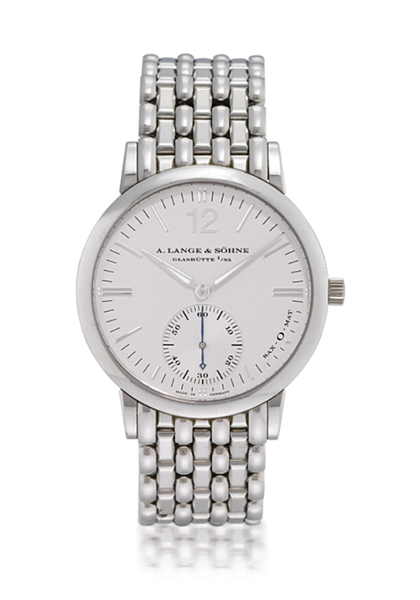Watchmaking is full of obscure terminology, and if you’re immersed in it day and night as some sad people (like myself) are, you end up with a pretty unusual vocabulary. The term “hacking seconds” is one of those terms which is not exactly the most intuitive, but is an essential part of understanding what your watch can do.
Like most things in watchmaking, the hacking seconds function stems from the need to be precise. When you pull out the crown of your watch, you can set the display of hours and minutes. But how do you set the seconds indication? In a watch without hacking seconds, the hour and minute hands are decoupled from the wheels that drive them, allowing you to change their position, but the seconds will continue to run. The only way you can synchronise the hours, minutes and seconds on your watch with a more accurate time indication (like the clock on your computer, for example) is to wait for your watch to run down and then wind it up again when the seconds indication on your reference clock matches where your watch seconds display has stopped. Honestly, it’s just not worth the effort.

When you pull out the crown on a watch with a hacking seconds function, the movement stops completely. This is accomplished with a brake lever that presses lightly against the balance wheel, stopping it from oscillating, which puts the entire movement at a standstill. You can then set the hours and minutes, and then push the crown back in when your reference clock seconds display matches your watch seconds display.
One level up from the hacking seconds is the seconds zero reset. In addition to the brake lever for the balance wheel, there is a heart cam on the wheel that drives the seconds indication. Pulling out the crown will cause the brake to press against the balance wheel and a hammer to fall onto the heart cam, bringing the seconds hand back to the zero position. Of course, this is functionally equal to setting your watch wherever the second hand happens to be. It’s just neater to do it from the zero position. And if you’re the kind of detail-oriented control freak who needs to have the hours, minutes and seconds just right, the zero reset is probably the kind of thing that appeals to you too.

How about tourbillons? How do you put the brakes on the balance wheel when the balance wheel is surrounded by a rotating cage? It’s not easy, but A. Lange & Söhne did it in 2008.
Everything they do at A. Lange & Söhne is dedicated to the pursuit of timekeeping precision anyway. Most of you will recall when the brand released the Sax-0-Mat in 1997, featuring their seconds zero-reset function. Fun fact: people tend to pronounce the watch name as “sax-oh-mat”, but it’s not an “O” — it’s actually the numeral 0, because of the zero reset.
To stop the tourbillon, A. Lange & Söhne came up with a solution both simple and direct. They formulated a special spring that has to be bent by hand to conform to a very specific shape so that the balance wheel can be successfully braked no matter where the arms of the tourbillon cage are. In 2014, they went even further and combined the zero-reset function with the stop-tourbillon function, something particularly challenging since the seconds were displayed via a hand on the tourbillon cage as well.





